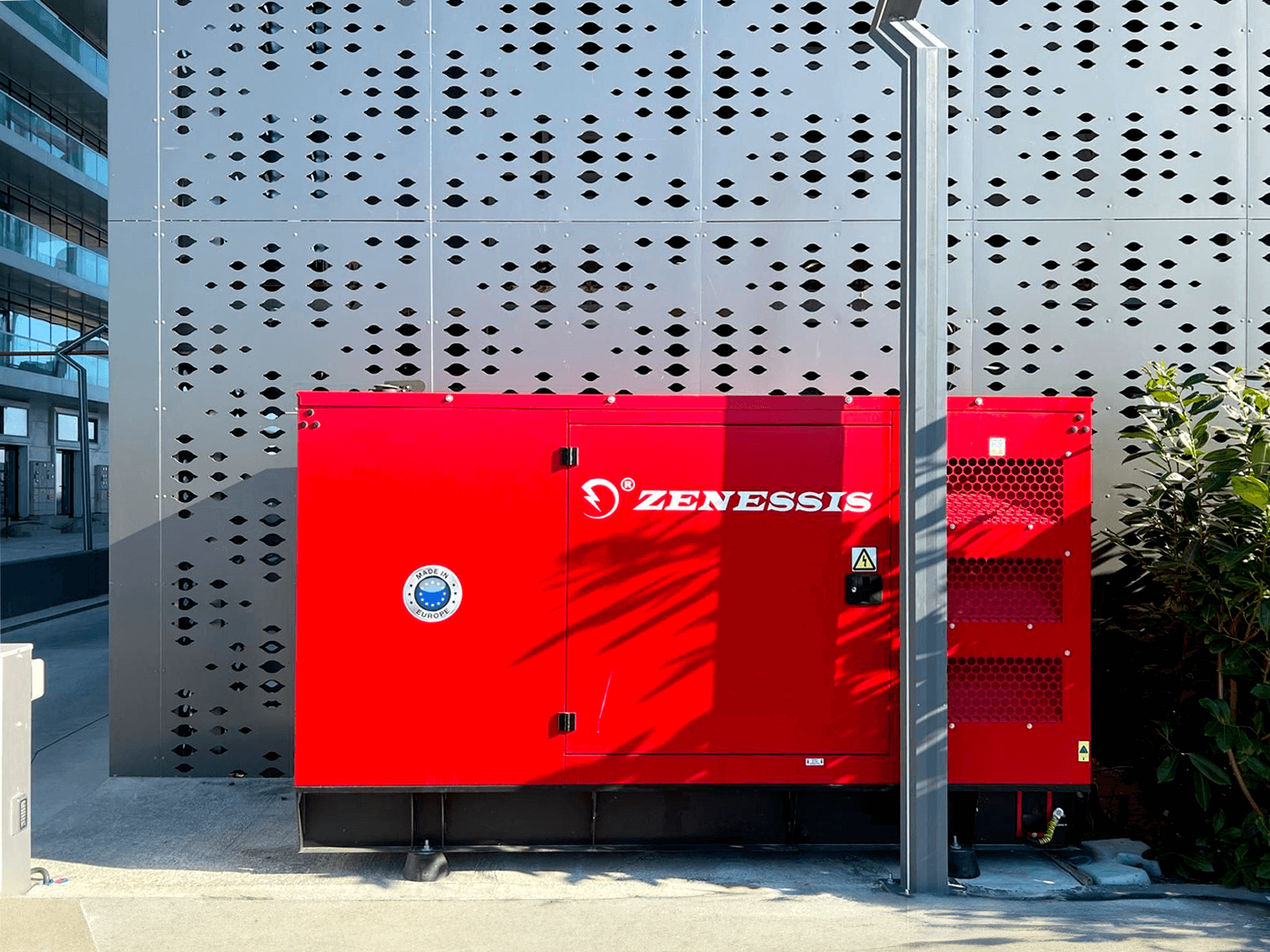Why Classic Generators Are No Longer an Option in Cities
In a crowded city, every extra decibel is a risk — whether it’s complaints, fines, or a tarnished reputation in front of the client.
An open-frame diesel generator running above 90 dB(A) can cause problems within half an hour, especially near a kindergarten or residential block.
Noise – an Overlooked Factor in Construction Site Planning
Noise isn’t just a nuisance. It’s a real barrier to executing a project. From neighbor protests to halted work by local authorities, the cost of neglect can be high. In urban areas, even small projects require well soundproofed equipment.
Clear Regulations, Significant Penalties
Government Decision 1756/2006 – based on EU directives – defines the maximum allowable noise level for outdoor equipment. If your equipment isn’t CE certified or doesn’t display the guaranteed sound power level, it can be stopped at any time.
Real Situations: Projects Blocked Due to “Excessive Noise”
I’ve seen contractors forced to move generators into makeshift containers, lay out cables for dozens of meters just to avoid fines or complaints. Some even had to change the generator mid-project. It’s cheaper to make the right choice from the start.
What Does “Silent Generator” Really Mean and What to Look For
A silent generator is not a luxury. It’s a professional solution tailored to urban realities. But to avoid buying just a pretty enclosure, you need to know what to look for.
Acceptable Noise Levels
A high-quality enclosed model emits 60–70 dB(A) at 7 meters. Compare this to an open-frame unit that exceeds 90 dB(A) — the difference is huge. For reference, 65 dB is the level of a normal conversation.
What Reduces the Noise
- Soundproof enclosure – Not just any metal box around the generator reduces noise. Look for galvanized steel housings with sealed doors and weather protection.
- Acoustic foam – Essential for absorbing vibrations and internal noise insulation.
- Optimized exhaust system – A well-designed muffler drastically reduces exhaust noise. Zenessis generators, for example, offer up to -51 dB attenuation.
- Smart ventilation design – Cooling openings must not become “noise tunnels.”
Open-Frame vs. Enclosed
Open-frame = lower price, higher noise, more problems
Enclosed = higher investment, but total control over acoustic levels and professional image
Critical Applications Where Silent Generators Are Mandatory
I’ve learned never to ignore the context where the generator is installed. In some places, “silent” isn’t just an option — it’s a basic requirement.
Hospitals, Data Centers, Public Institutions
These are places where power must not be interrupted — but can’t cause disturbances either. A generator humming at 80 dB near an operating room? Unacceptable.
Construction Sites in Residential Areas
When building between homes or apartment buildings, a silent generator is the only solution. You don’t want your team to be known more for noise than for the completed work.
Hotels, Schools, Office Buildings
Where there’s constant human traffic and comfort and reputation matter, energy infrastructure must remain… discreet.
How to Choose a Silent Generator Without Technical Compromises
Low noise doesn’t mean low performance. On the contrary. Some of the most reliable generators I’ve seen are also the quietest. But the choice must be informed.
Correct Power Rating
Calculate equipment consumption, add a 20–30% buffer, and account for inrush current — especially for industrial applications.
The Right Fuel
- Diesel – High efficiency and long autonomy, ideal for continuous use. Zenessis soundproofed diesel generators are already tailored to urban requirements.
- Gas/Gasoline – Quieter, but more limited in autonomy and robustness.
Autonomy, Automatic Start, and Maintenance
- Minimum 8–12 hours autonomy, preferably over 20 hours for critical uses
- ATS (Automatic Transfer Switch) panels are vital — you want everything to start automatically when power fails
- Maintenance should be easy with quick access to spare parts. In the end, time savings matter more than a 2% purchase discount.
Concrete Advantages of the Zenessis Silent Generator Range
Zenessis has invested years of experience into developing generators that not only run quietly but also perform flawlessly in sensitive environments.
Real Technologies, Not Just Marketing
- Professional galvanized steel enclosures, premium acoustic foam, and real sound-attenuating mufflers
- Advanced control systems — including IoT-based remote monitoring
- Stage III and Stage V compliant models for EU projects and regulated environments
Wide Range and Scalability
Whether you need 20 kVA or 2500 kVA, there’s an option available. All models can be synchronized, used in parallel, or integrated with solar panels or UPS systems.
Real Operational Savings
The generators are designed for fast maintenance and lower operating costs. According to industry data, Zenessis maintenance is 30–40% cheaper than with other brands — and you get 24/7 rapid access to service.
Final Recommendations – How to Choose the Right Generator for an Urban Project
If I had to choose again, based on everything I’ve seen on-site and in planning meetings, I’d prioritize:
Essential Questions
- What noise level is acceptable in my area?
- Do I need automatic start?
- What is the expected daily operating time?
- Do I have space for outdoor placement? (If yes, the enclosure must resist dust and rain)
Avoid Hidden Costs and Delays
- Check if the generator is CE-certified and labeled with noise level
- Don’t go for “the cheapest” — the price difference will be offset by fines, relocations, or complaints
Tips from Experience
- Choose a supplier that provides fast maintenance, not just delivery
- If you work frequently in cities, the investment in a “Silent” model pays off in 6–12 months by avoiding problems
- Be ready for future needs — think ahead, not just for today’s project
Conclusion
A silent generator isn’t just a smart choice for the urban environment — it’s a fundamental requirement if you want to avoid interruptions, complaints, and reputational damage. Enclosed, soundproofed models with long autonomy and automatic start systems are, in my view, the only serious option for construction projects in Romania’s cities.
If you’re planning to launch a project in the city — whether it’s a construction site, clinic, office, or warehouse — think long-term. A silent generator is the kind of investment you won’t hear — but it will bring you peace of mind. In every sense.

